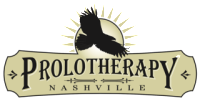How does PRP work?
PRP triggers healing in two ways. First, it utilizes the body’s two major sources of growth factors (white blood cells and platelets), which are the chemicals that trigger the body’s connective tissue healing system. This is the six-week cycle of healing that most people are familiar with following major surgery. (Link to connective tissue healing and paper on CTDS). The connective tissue healing system (think ‘following surgical incision or sprained ankle’) primarily makes new collagen molecules to replace those torn due to accident, or cut by a surgeon’s knife. Most of the time, PRP is used to trigger healing to tighten, toughen, and shorten tendons and ligaments that have unhealed damage, which causes pain, joint cartilage loss, disc degeneration, and other problems.
The second mechanism involves stem cells that are present in the mixture. The Harvest system that I use provides about 120,000 stem cells per treatment. Stem cells are cells that are capable of ‘differentiating’ into other body cells, such as chondrocytes, or cells that make new articular cartilage (which lines joint surfaces). It should be emphasized that stem cells play no meaningful role in production of new collagen in ligaments and tendons. Healing and strengthening in ligaments and tendons is produced by the connective tissuehealing system, not the stem-cell system.
